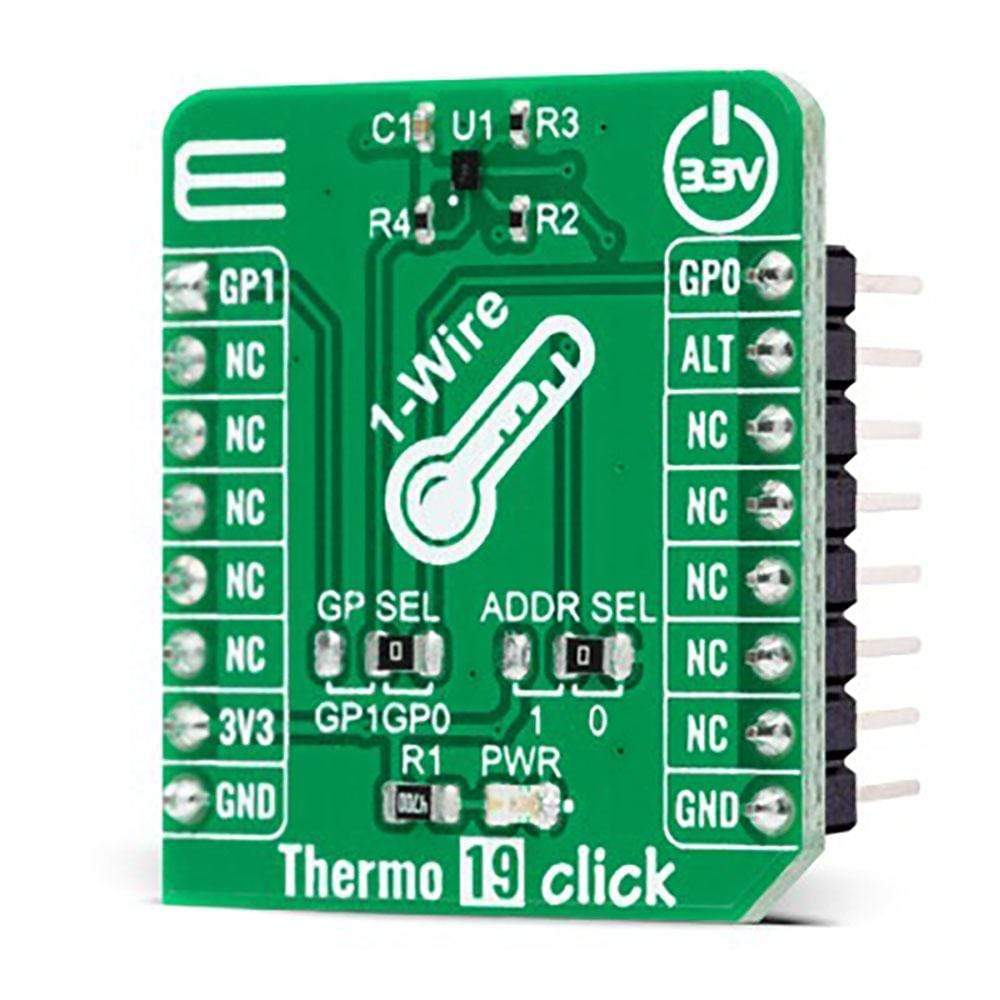
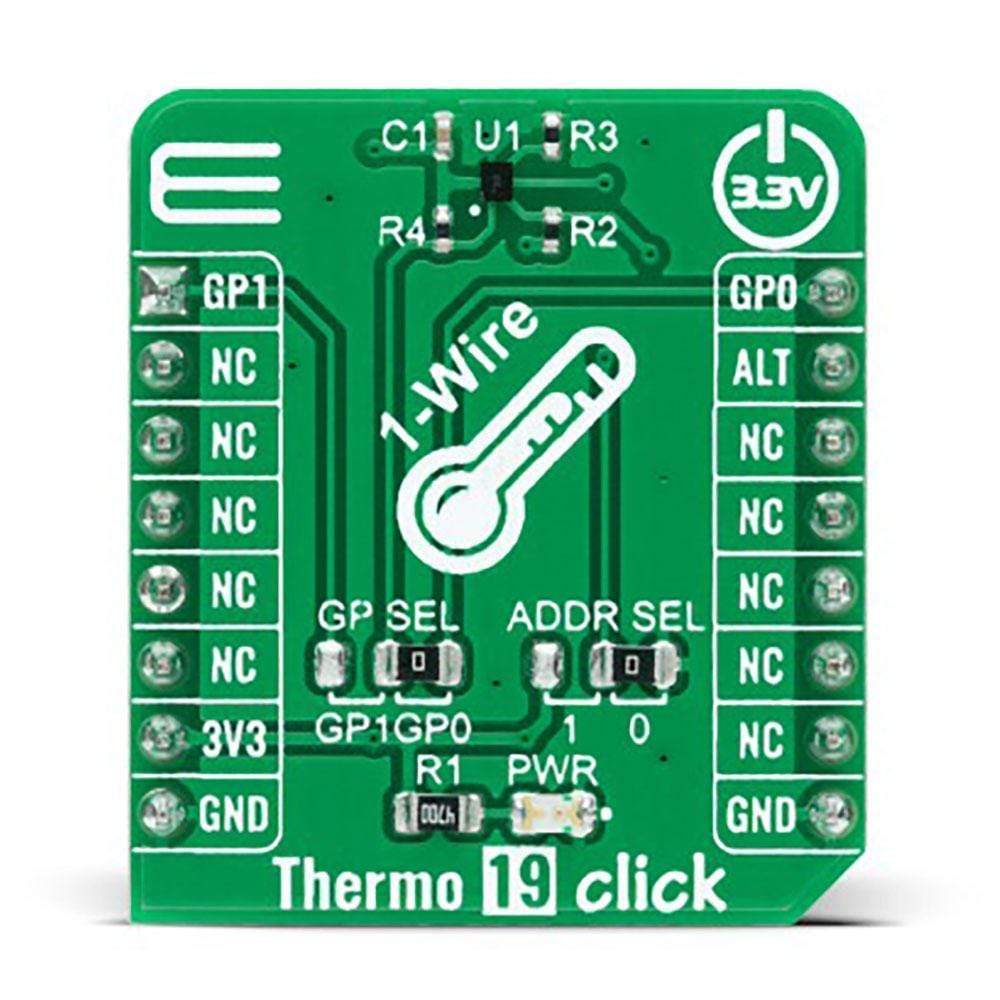
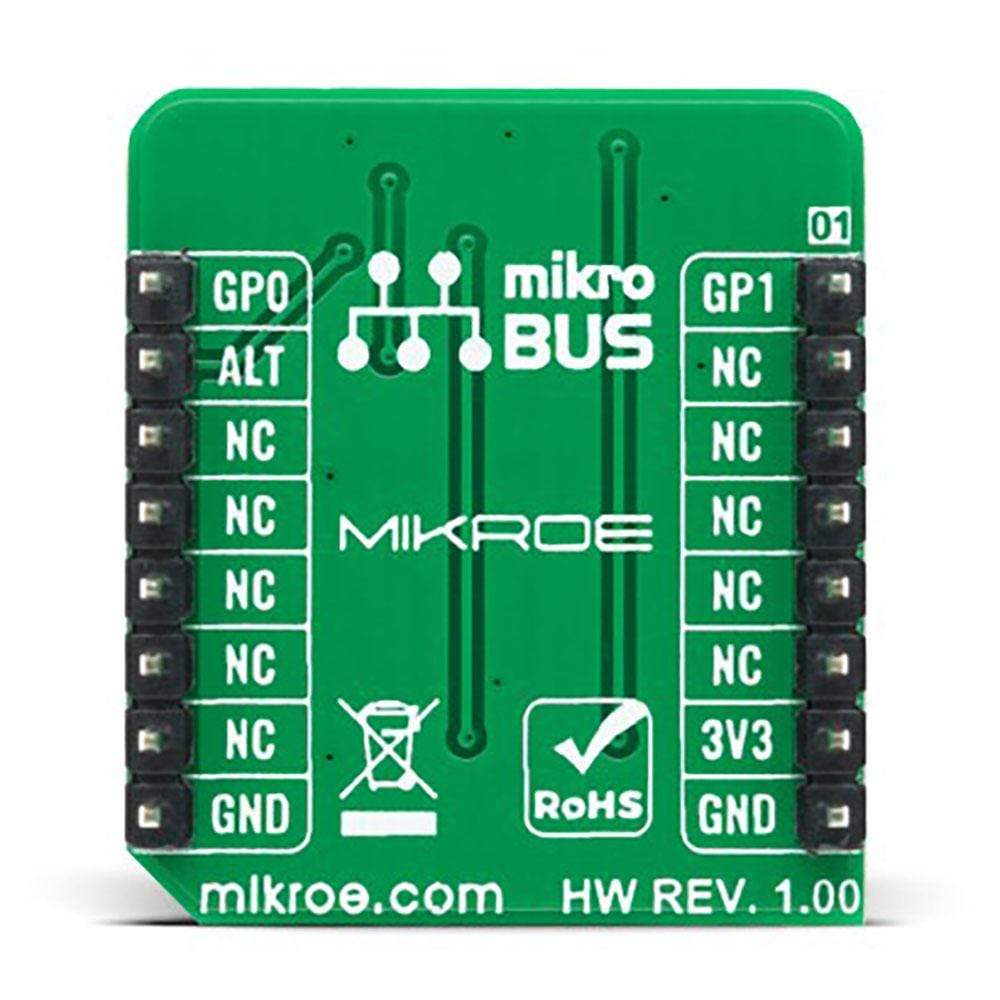
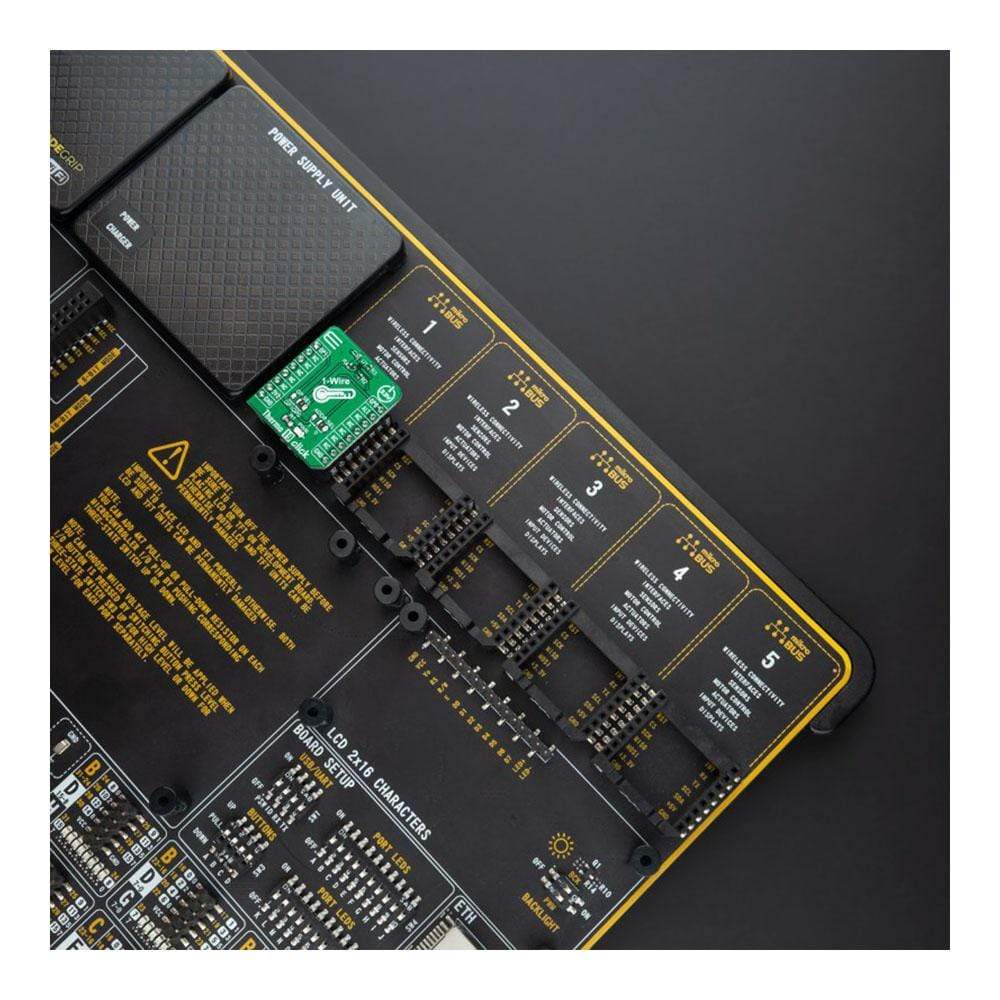
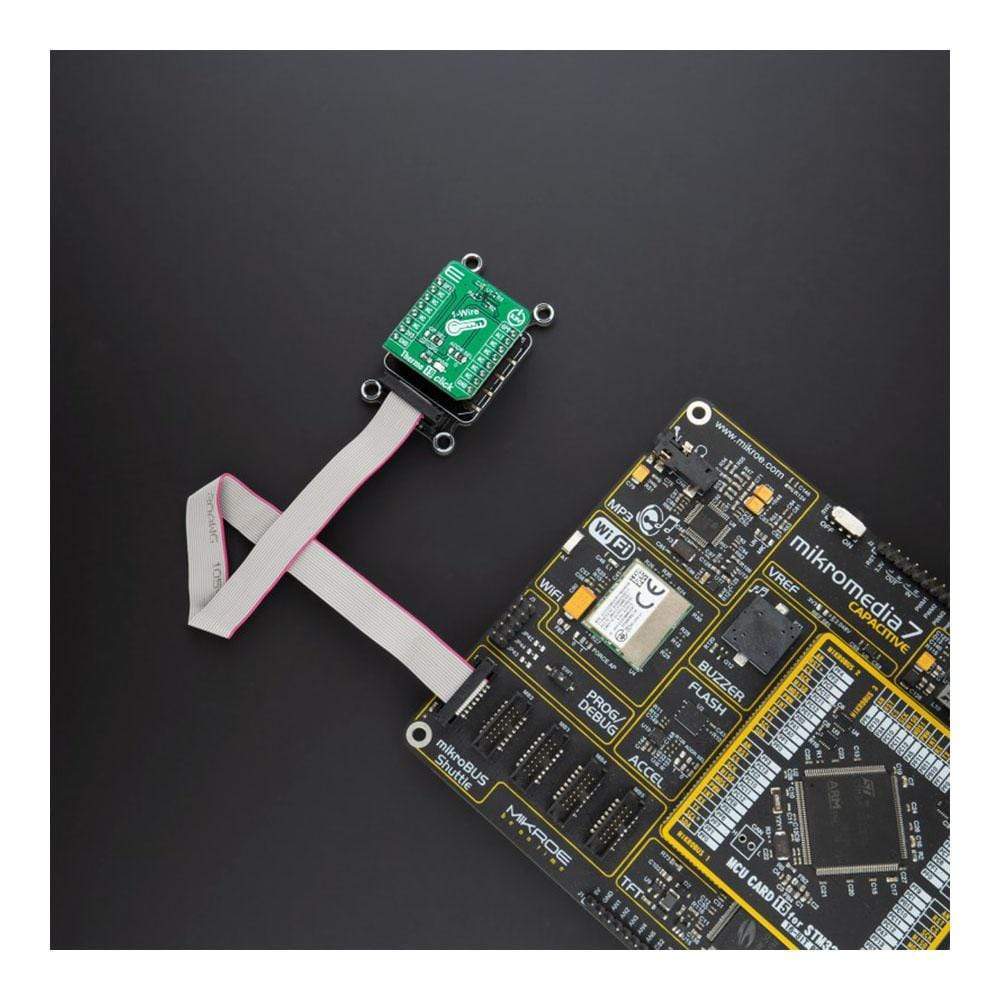
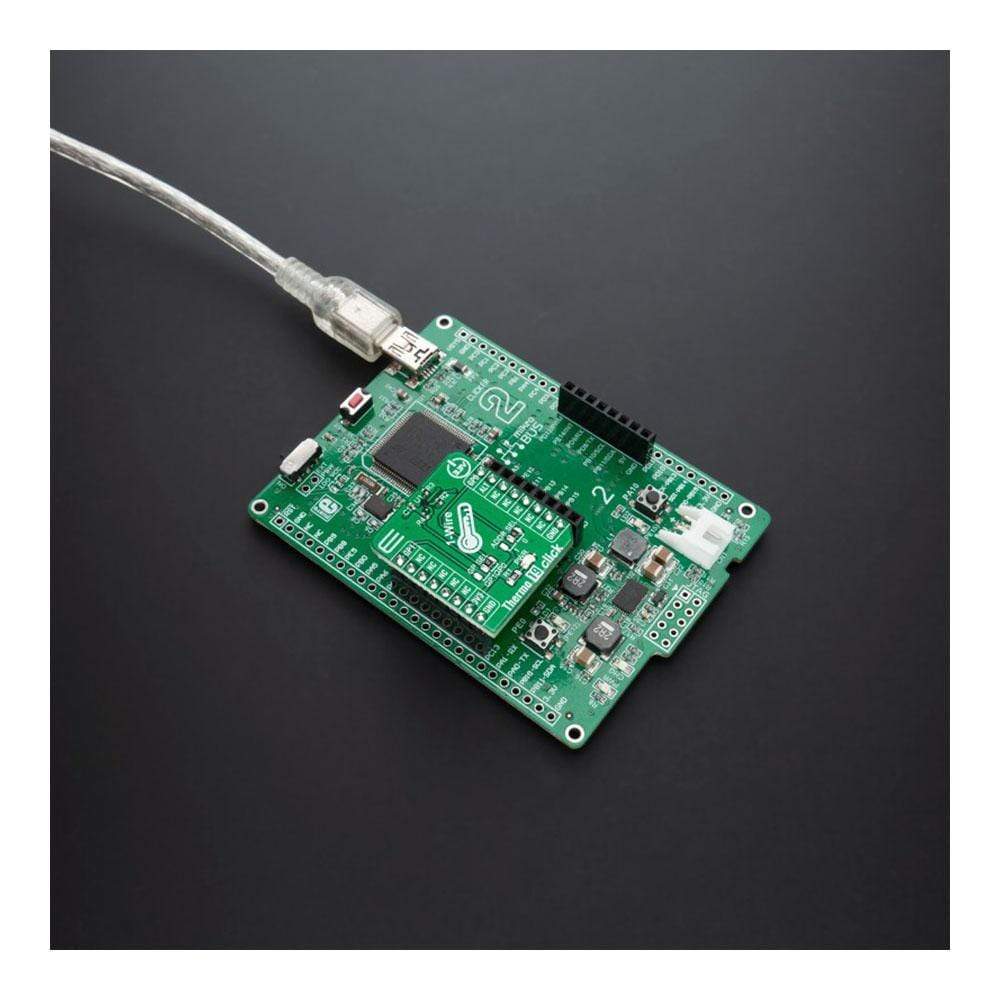
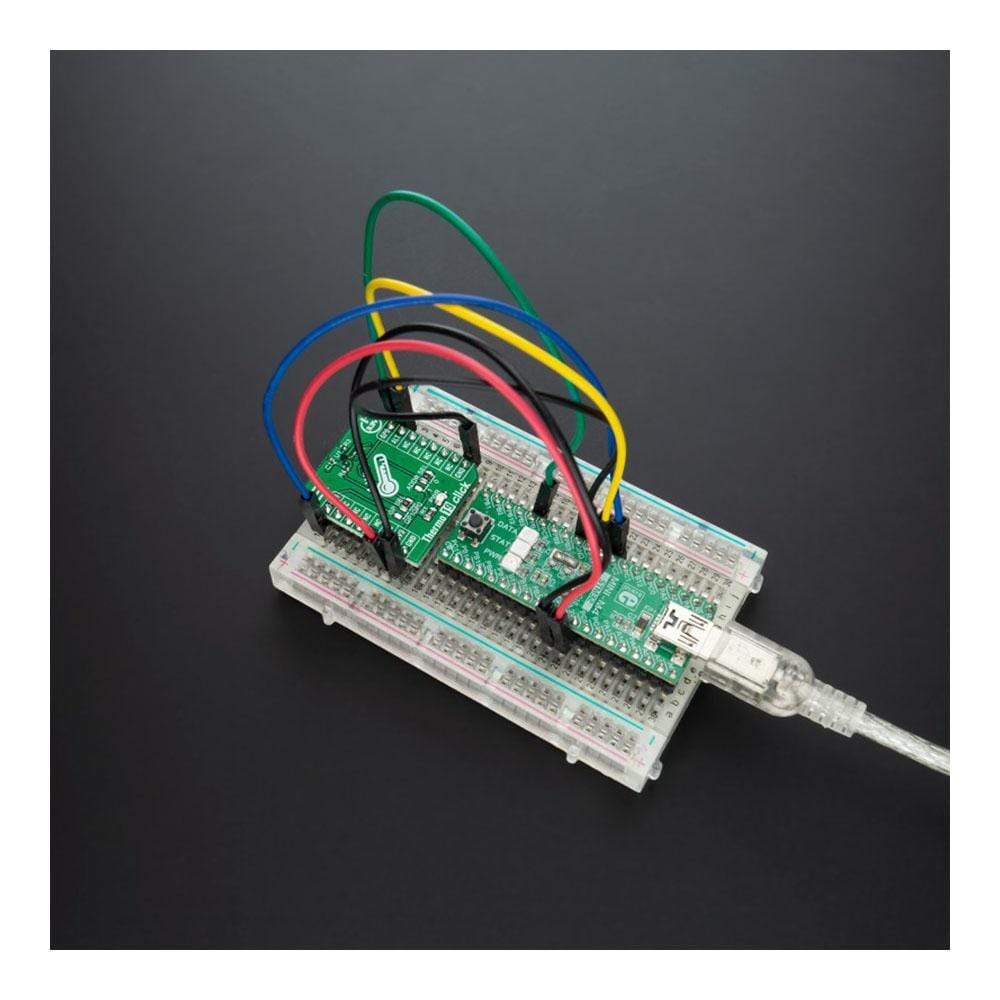
Overview
The Thermo 19 Click Board™ is a compact add-on board that provides an accurate temperature measurement. This board features the MAX31825, a temperature sensor that provides 8-bit to 12-bit Celsius temperature measurements with better than ±1.75°C from -45°C to +145°C from Maxim Integrated. It has a unique 64-bit serial code stored in an on-chip ROM, an alarm output for detection of temperature faults, temperature resolution selection from 8 to 12 bits, and it allows temperature conversion to 10-bit digital word in a period of 80ms (max). The Thermo 19 Click makes a perfect choice for industrial control, in communication and data centre equipment, or in any other temperature measurement applications.
The Thermo 19 Click is supported by a mikroSDK compliant library, which includes functions that simplify software development. This Click Board™ comes as a fully tested product, ready to be used on a system equipped with the mikroBUS™ socket.
Downloads
La carte Thermo 19 Click Board™ est une carte complémentaire compacte qui fournit une mesure de température précise. Cette carte est équipée du MAX31825, un capteur de température qui fournit des mesures de température Celsius de 8 à 12 bits avec une précision supérieure à ±1,75 °C de -45 °C à +145 °C de Maxim Integrated. Il dispose d'un code série unique de 64 bits stocké dans une ROM sur puce, d'une sortie d'alarme pour la détection des défauts de température, d'une sélection de résolution de température de 8 à 12 bits et permet la conversion de la température en mot numérique de 10 bits dans une période de 80 ms (max). La carte Thermo 19 Click est un choix parfait pour le contrôle industriel, dans les équipements de communication et de centre de données, ou dans toute autre application de mesure de température.
Le Thermo 19 Click est pris en charge par une bibliothèque compatible mikroSDK, qui comprend des fonctions qui simplifient le développement logiciel. Ce Click Board™ est un produit entièrement testé, prêt à être utilisé sur un système équipé du socket mikroBUS™.
| General Information | |
|---|---|
Part Number (SKU) |
MIKROE-4295
|
Manufacturer |
|
| Physical and Mechanical | |
Weight |
0.017 kg
|
| Other | |
Country of Origin |
|
HS Code Customs Tariff code
|
|
EAN |
8606027380730
|
Warranty |
|
Frequently Asked Questions
Have a Question?
Be the first to ask a question about this.







